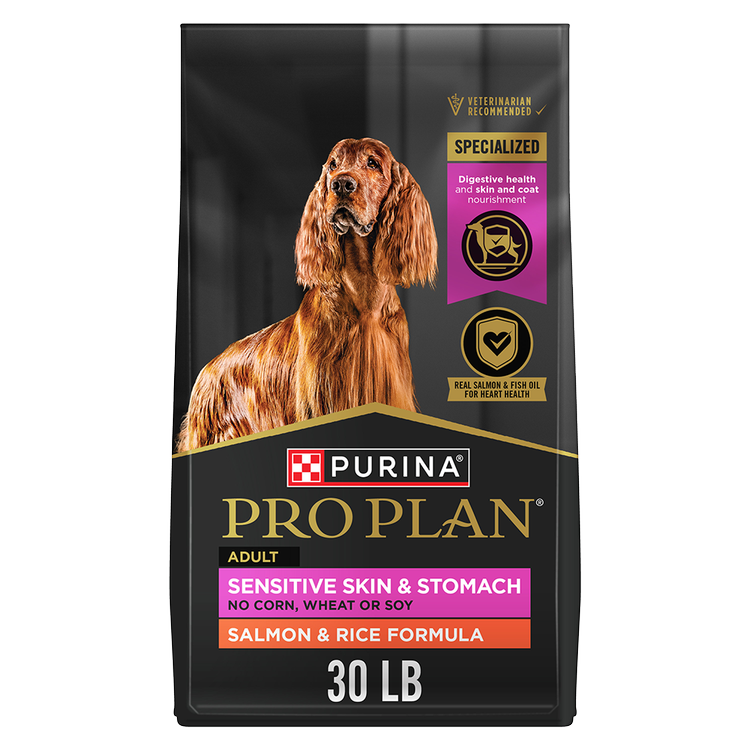Yeast Infection in Dogs: Common Causes, Symptoms & Treatment


You may be surprised to learn that a yeast infection in dogs isn’t unusual. In fact, among infections, it’s one of the most common.
Unfortunately, living with a yeast infection isn’t pleasant. It can cause intense itching and swelling among other symptoms, and is generally a nuisance for your canine companion.
How can you comfort a pet who has this condition? Read on to learn more about causes, symptoms and treatment options for your dog’s yeast infection.
What is a Yeast Infection in Dogs?
Yeast is a type of fungus that lives on a dog’s skin and in their gut.
Typically, the fungus’ numbers are too low to make it a threat. Plus, it’s kept in check by the gut’s healthy bacteria.
Occasionally, though, the dog’s natural defenses in the skin are diminished and the yeast population grows, leading to infection.
Dog skin yeast infections are often triggered by different skin conditions in your pet.
What Causes Yeast Infection in Dogs?
If you’re wondering, How do dogs get yeast infections?, they can usually be traced to a weakening of or imbalance in the body’s defense systems.
For example, dogs with skin allergies can be prone to yeast infections when their immune system overreacts to the presence of an allergen. (Food allergies may contribute too, although this is less common.)
Seborrhea, a skin disease characterized by flaky, crusty skin, can also lead to the growth of the yeast fungus.*
In addition to skin conditions, factors that can affect your dog’s health (e.g., stress and diet) may also play a role.
Yeast infections can appear in many areas on your canine companion’s body, but skin folds are a common location. Folds contain higher levels of moisture, which help facilitate fungi growth.
Dog paw yeast infections and infections in the ear are also common.
Dog Ear Yeast Infection
Is your pet itching their ear a lot? It’s possible they have a dog ear yeast infection.
Dogs with droopy ears are particularly at risk. Similar to the area between skin folds, droopy ears are enclosed and have less air flow. If the inside of the ear becomes moist or irritated, it’s easy for a yeast infection to occur.
Dogs who swim also face higher risk of a yeast infection in their ears.
(Pro tip: Find out how to clean your dog’s ears to reduce the chance of infection.)
Dog Yeast Infection Symptoms
Here are some common signs of a yeast infection in dogs:
- Itchy skin
- Rash or skin irritation
- Redness
- Greasy coat
- Hair loss
- Brown discharge (ears* and paws)
- Bad odor (ears)
Which Dogs Get Yeast Infections?
Any dog can get a yeast infection, but certain breeds are more predisposed to developing one. They include:
- Shih Tzu
- Cocker Spaniel
- Basset Hound
- Boxer
- Golden Retriever
- Poodle
- Dachshunds
Remember, yeast infections can be the result of other conditions. If your dog has skin allergies, other bacterial infections, or is on medication such as antibiotics or corticosteroids, they face increased risk.
Diagnosing a Yeast Infection in Dogs
Diagnosing certain fungal diseases in dogs can be challenging. Fortunately, yeast infections are usually easy to detect.
If you see symptoms, take your dog to visit the veterinarian. They’ll review their clinical signs and likely run tests on your pet’s skin. From hair plucks to skin scrapes, there are a few different techniques that can help identify infectious agents such as yeasts.
Once the sample is collected, it’s reviewed under a microscope to confirm the presence of any bacteria, fungi or viruses.
Dog Yeast Infection Treatment
One of the most common ways to address yeast infections in dogs is through a topical treatment, such as antifungal shampoos.
Chemicals in these shampoos are formulated to kill yeast. How often you need to apply them will depend on the progression of the infection. Generally, you can expect the infection to clear up in about a week, but again each case will have its own timeline.
Another option for treatment is oral medication. This is usually prescribed when topical solutions fail. Anti-inflammatory medications may also be recommended if your pet has serious swelling.
Because yeast infections develop when your dog’s natural defenses are diminished, it may help to boost their immune system.
A complete and balanced diet can strengthen their immune response and reduce the risk of infection.
Remember, though, diet should be used in addition to whatever treatment is prescribed by your veterinarian.
How to Treat a Yeast Infection in Your Dog’s Ears
To treat a yeast infection in your dog’s ears, your veterinarian may begin by cleaning and drying the ear.
This allows them to thoroughly examine the ear canal and ensure the ear drums are intact. (If not, certain medications aren’t safe to give your pet.)
Cleaning also creates a less favorable environment for bacteria to grow, and helps topical medication treat the surface of the ear canal.
Once the ears are clean, ear drops may be recommended and, depending on the severity of the infection, oral medication as well.*
Is There a Dog Yeast Infection Home Remedy?
Avoid using home remedies to treat your dog’s yeast infection. To date, there is no research showing that common household or herbal substances are effective solutions.
Vinegar is known to be an effective treatment for yeast, but you need to dilute it properly (otherwise you risk further irritating the skin). Ask your veterinarian about using vinegar if you’re curious.
What to Feed When Your Dog Has a Yeast Infection
Like home remedies, there are no studies confirming that certain foods are beneficial for dogs with yeast infections.
The exception may be if your pet has a food allergy. In this case, talk to your veterinarian about switching food or modifying your dog’s diet.
While a yeast infection in dogs is relatively common, it’s important to take it seriously. Have your veterinarian examine your pet so they can recommend a plan to treat and cure the problem.
For more care advice, view our dog health articles for tips from our experts.
*Eldredge, D., Carlson, L., Carlson, D. & Griffin, J. (2007). Dog Owner’s Veterinary Handbook (4th ed.). (Beth Adelman, Ed.) Wiley Publishing, Inc.
Related articles

Reward Yourself with myPurina
Earn and redeem rewards for Purina products with the myPurina app.






